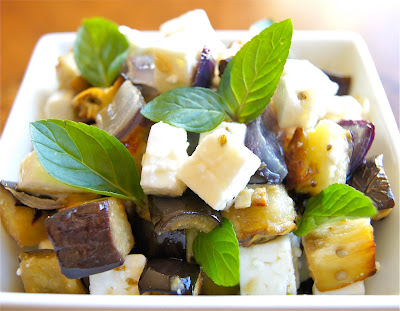At this point, we had been in Barcelona for only three days but taxis had become our primary means of transportation. Barcelona's climate is oppressive in August. An otherwise leisurely twenty minute walk is made unbearable by the heat and humidity, even at eleven o'clock in the morning.
Joining us this morning were two of our friends from Minneapolis who had been living and working in Barca for the past year, and who have somehow rapidly adapted to the heat. We boarded the taxi at the corner of Madrazzo and Valmis, an intersection marked by the a local hospital and relatively modern buildings. The cab driver was soon maneuvering through cobble-stoned streets, barely wide enough for his Spanish-made Astra. We slowly drove past ornate hardwood doors and brightly colored store fronts bordered by wrought-iron lamps, and flowers baskets hanging from windows and spilling over with brightly colored vines and blossoms. We had come to this part of town for a lesson in Catalan cuisine. And I was ready to learn about and savor the favors of Spain!
Clams for the paella.
Chef Alesandra getting the paella started.
Espai Boisa is run by Claudia Schmilinsky and Pep Soler, a husband and wife team with a desire to teach locals and travelers alike about Spanish and Catalan cuisine. From the prawns and clams for the paella, to the tomatoes and olive oil for the
pan con tomate, and the red and white wines that Pep so generously refilled throughout the class - all ingredients were fresh, organic, and sourced locally.
Catalonia, of which Barcelona is the capital, is the northeastern most region in Spain with a cuisine distinct from other regions. Claudia and Pep and their chef Alesandra prepared a menu of both Catalan and other regional dishes: spanish tortilla, bacon wrapped stuffed dates, pan con tomate, gazpacho, paella, and crema catalana.
Preparing pan con tomate.
The finished paella.
Crema catalana.
The class started with introductions, followed by a quick description of each dish by Alesandra. Our first appetizer, the spanish tortilla, is an egg dish made in a non-stick skillet and filled with potatoes and onions cooked confit-style. Certainly, not your ordinary breakfast eggs. The other appetizer was dates stuffed with almonds and wrapped in bacon before finally being roasted in the oven - a simple hor d'oeuvre which I took note to make at home at my next casual dinner party, served with a pitcher of homemade sangria perhaps. A third appetizer was pan con tomate, simply slices of fresh bread rubbed with fresh tomatoes and finished with sea salt and olive oil. Then there was gazpacho. Alexandra makes her gazapacho with tomatoes, onions, watermelon, lemon juice and olive oil. This, we later learnt, is a slight variation from the traditional gazapacho which includes day-old bread. Our main dish was
paella which is not Catalan, having originated in the Valencia region, but what cooking class in Spain would be complete without Spain's most popular dish? Dessert was crema catalana, a dish similar to creme brulee with a couple notable differences. Crema catalana is made with whole milk and the custard is finished on the stove-top; creme brulee is made with cream and the custard is finished in the oven.
While Alesandra relayed instructions, members of the class (on this day there were fourteen of us) began the chopping and dicing process, getting the ingredients ready for their respective dishes. We all had different tasks: a couple people supervised the potatoes-confit for the spanish tortillas, some worked on the gazpacho but everyone got a chance to help with the paella. Seemingly, we all gravitated to the large paella pot in the center of the cooking station, a point that Alesandra took notice of and expounded on. Paella, she explained, is a dish that's meant to be shared and those restaurants that serve individual paellas deviate from the true meaning of the dish. I liked her narrative. I have a strong proclivity for tradition when it comes to food, so I respected her efforts to incorporate her values in the class.
With Claudia and Pep.
Two and a half hours passed quickly amidst the the chatter, the culinary education, and the good wine. Claudia and Pep were the most gracious hosts, having done a superb job of facilitating a warm, welcoming environment. While fourteen people is a lot for one cooking class, I felt that it made for an interesting mix of backgrounds and conversation. In the end, we all had one thing in common: an appreciation of healthy, wholesome, and delicious food. So, if you ever make it to Barcelona, try and include a cooking class from Espai Boisa on your agenda. If I return, I'd do it again.
To view more photos, click
here for our Facebook page.
For more information about Espai Boisa, click
here.
Recipes:
Bacon Wrapped Dates
(8 ounce) package pitted dates
4 ounces almonds
1 pound sliced bacon
Directions
Preheat the broiler. Slit dates. Place one almond inside each date. Wrap dates with bacon, using toothpicks to hold them together. Broil 10 minutes, or until bacon is evenly brown and crisp.
Traditional Gazpacho
Serves 4
100g slightly stale crusty white bread, soaked in cold water for 20 min.
1kg very ripe tomatoes, diced
1 ripe red pepper and 1 green pepper, deseeded and diced
1 medium cucumber, peeled and diced
2 cloves of garlic, peeled and crushed
150ml extra virgin olive oil
2 tbsp sherry vinegar
Salt, to taste
Lemon juice, to taste
Directions1. Mix the diced tomatoes, peppers and cucumber with the crushed garlic and olive oil in the bowl of a food processor or blender. Squeeze out the bread, tear it roughly into chunks, and add to the mixture. 2. Blend until smooth, then add the salt and vinegar to taste and stir well. 3. Pass the mixture through a fine sieve, then cover and refrigerate until well chilled. 4. Serve with garnishes of your choice: I liked diced black olives, hard- boiled egg and small pieces of cucumber and pepper; mint or parsley also works well, and many people add spring onion, cubes of Spanish ham and so on.
Crema Catalana or Catalan Cream
Crema Catalana or Catalan Cream is the Catalan name and version of the French dessert, crème brulée. In fact, many regions lay claim to the origin of the dessert. Wherever it originated, enjoy and let it dissolve in your mouth! It is a great dessert for Spring, since it is also called Crema de Sant Josep, or St. Joseph’s cream, traditionally prepared on March 19th, St. Joseph’s Day, the Spanish equivalent of Father’s Day in the USA.
Yield: 4 Servings
Ingredients:
1 cup sugar
4 egg yolks
1 tbsp cornstarch
1 stick cinnamon
grated rind of 1 lemon
2 cups milk
Directions: This is a great dessert to make ahead of time, since it is very easy and requires 2-3 hours of refrigeration before serving. Make it the day before and leave it in the refrigerator until you are ready to serve. Then, heat the broiler, caramelize the sugar and serve! In a pot, beat together the egg yolks and 3/4 cup sugar until thoroughly blended and the mixture turns frothy. Add the cinnamon stick and grated lemon rind. Pour in the milk and cornstarch. Slowly heat the mixture, stirring constantly, just until thickened. Remove pot from heat immediately.
Tip: As soon as the mixture thickens and you feel resistance while stirring, remove the pot from the heat or the mixture may curdle or separate! The texture of the finished crema will be grainy instead of smooth and creamy as it should be. Remove the cinnamon stick and ladle the milk mixture into 4-6 ramekins (depending on size). Allow to cool, then refrigerate for at least 2-3 hours.Before serving, preheat the broiler. Remove ramekins with the crema catalana from refrigerator and sprinkle the rest of the sugar over each ramekin. When broiler is hot, place the ramekins under the broiler on the top shelf and allow the sugar to caramelize, turning gold and brown. This may take 10 minutes or so, depending on your broiler. Remove and serve immediately.If you'd like, you can serve the crema catalana chilled, but we think it has more flavor when served warm from the broiler.



























